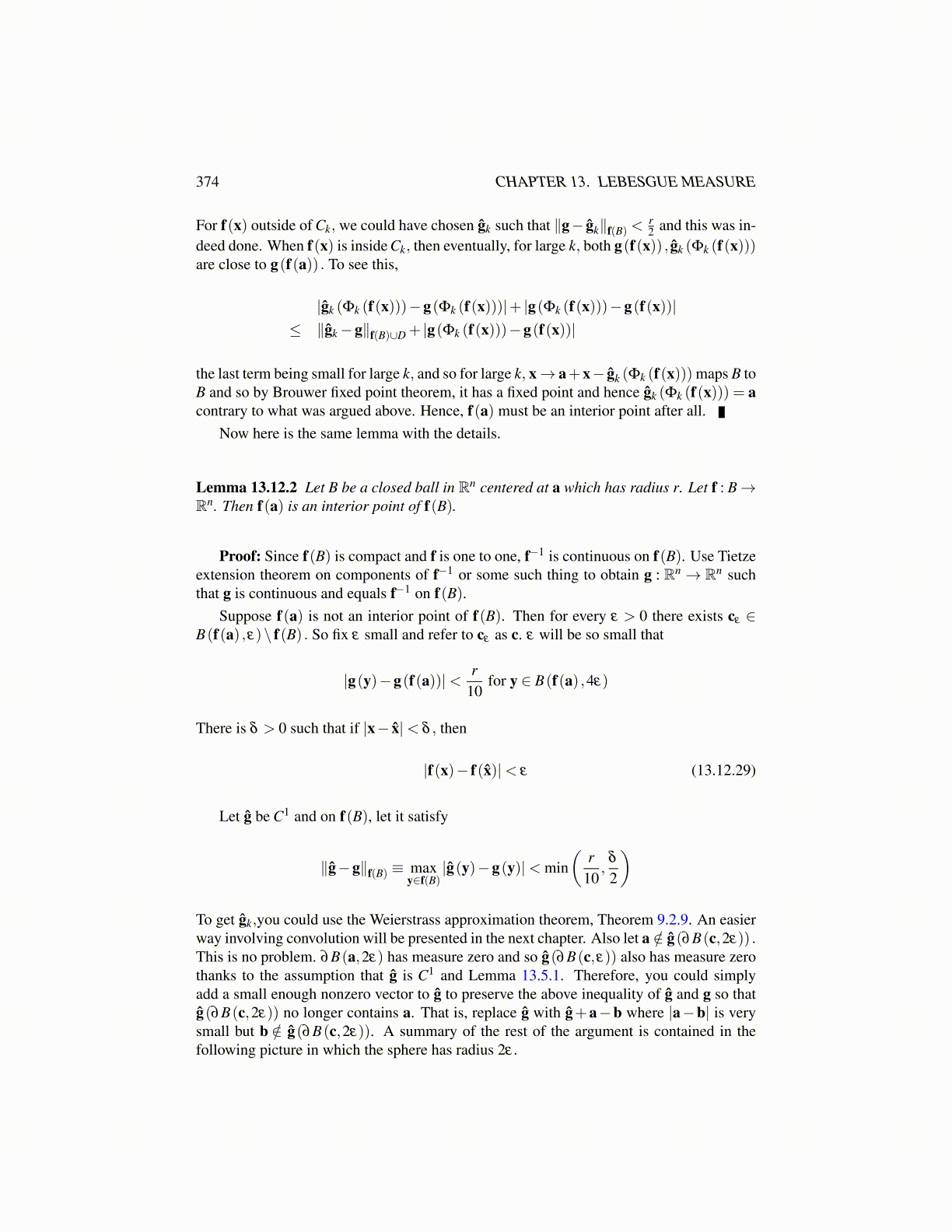
374 CHAPTER 13. LEBESGUE MEASURE
For f(x) outside of Ck, we could have chosen ĝk such that ∥g− ĝk∥f(B) <r2 and this was in-
deed done. When f(x) is inside Ck, then eventually, for large k, both g(f(x)) , ĝk (Φk (f(x)))are close to g(f(a)) . To see this,
|ĝk (Φk (f(x)))−g(Φk (f(x)))|+ |g(Φk (f(x)))−g(f(x))|≤ ∥ĝk−g∥f(B)∪D + |g(Φk (f(x)))−g(f(x))|
the last term being small for large k, and so for large k, x→ a+x− ĝk (Φk (f(x))) maps B toB and so by Brouwer fixed point theorem, it has a fixed point and hence ĝk (Φk (f(x))) = acontrary to what was argued above. Hence, f(a) must be an interior point after all.
Now here is the same lemma with the details.
Lemma 13.12.2 Let B be a closed ball in Rn centered at a which has radius r. Let f : B→Rn. Then f(a) is an interior point of f(B).
Proof: Since f(B) is compact and f is one to one, f−1 is continuous on f(B). Use Tietzeextension theorem on components of f−1 or some such thing to obtain g : Rn → Rn suchthat g is continuous and equals f−1 on f(B).
Suppose f(a) is not an interior point of f(B). Then for every ε > 0 there exists cε ∈B(f(a) ,ε)\ f(B) . So fix ε small and refer to cε as c. ε will be so small that
|g(y)−g(f(a))|< r10
for y ∈ B(f(a) ,4ε)
There is δ > 0 such that if |x− x̂|< δ , then
|f(x)− f(x̂)|< ε (13.12.29)
Let ĝ be C1 and on f(B), let it satisfy
∥ĝ−g∥f(B) ≡ maxy∈f(B)
|ĝ(y)−g(y)|< min(
r10
,δ
2
)
To get ĝk,you could use the Weierstrass approximation theorem, Theorem 9.2.9. An easierway involving convolution will be presented in the next chapter. Also let a /∈ ĝ(∂B(c,2ε)) .This is no problem. ∂B(a,2ε) has measure zero and so ĝ(∂B(c,ε)) also has measure zerothanks to the assumption that ĝ is C1 and Lemma 13.5.1. Therefore, you could simplyadd a small enough nonzero vector to ĝ to preserve the above inequality of ĝ and g so thatĝ(∂B(c,2ε)) no longer contains a. That is, replace ĝ with ĝ+a−b where |a−b| is verysmall but b /∈ ĝ(∂B(c,2ε)). A summary of the rest of the argument is contained in thefollowing picture in which the sphere has radius 2ε .